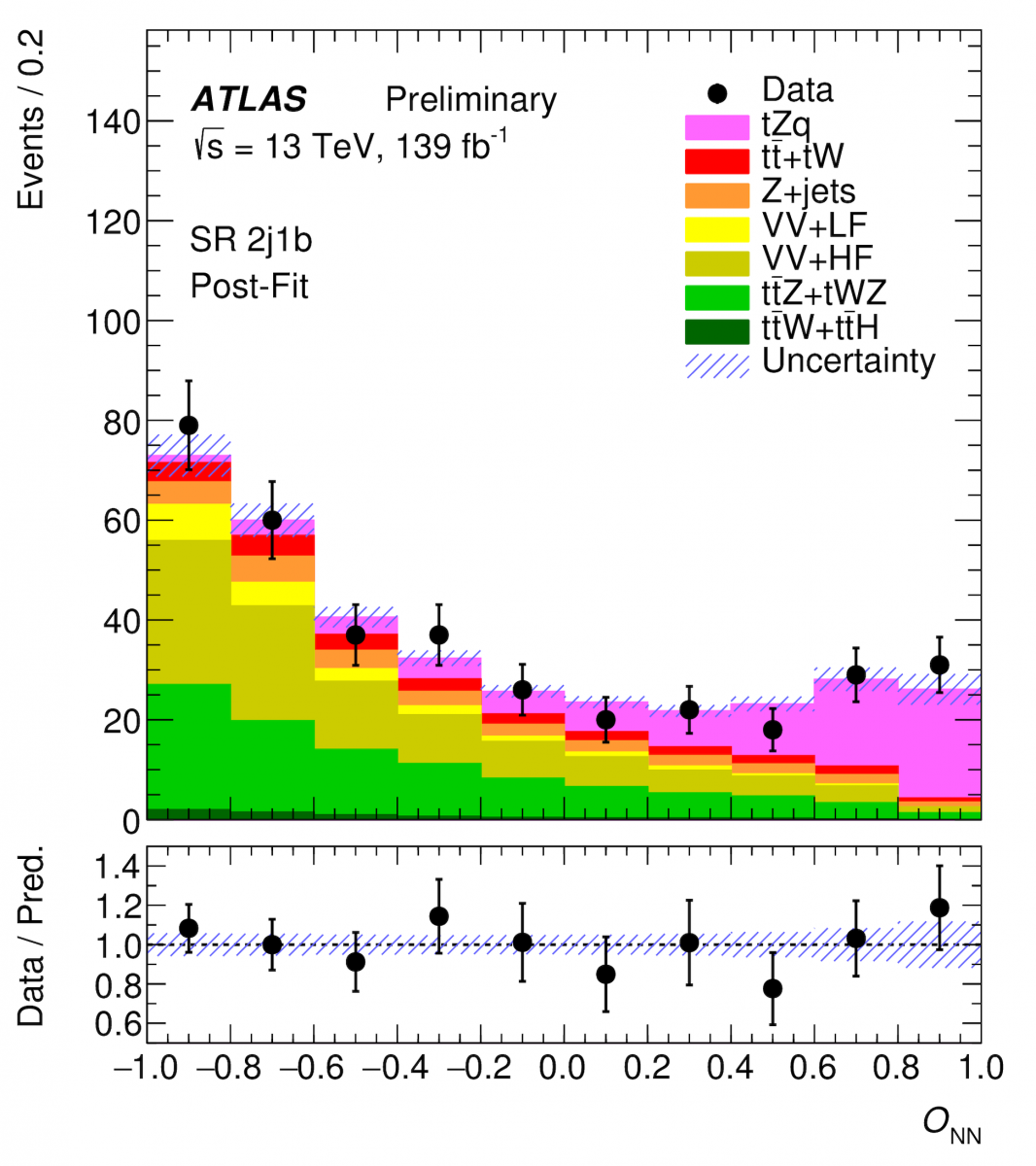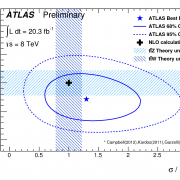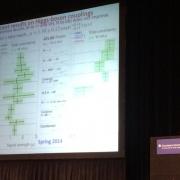Access to Collaboration Site and Physics Results

As the heaviest elementary particle, the top quark is appropriately named. It is ideally suited for precision measurements that test the limits of our understanding and could provide indirect hints at new physics. Physicists from around the world gathered in Beijing, China, last week at the annual TOP2019 conference to exchange the latest news, results and ideas on the top quark. For the ATLAS collaboration, TOP2019 proved a great success, with several excellent talks and posters presented by its members.
In the summer leading up to TOP2019, ATLAS released several new top-quark results, including five measurements that utilize the full Run 2 dataset (corresponding to data taken at CERN’s Large Hadron Collider (LHC) between 2015 and 2018). These results were among the key highlights of the conference, and three of the new analyses are described in greater detail below. In addition, the evidence for asymmetry in top-quark pair production – the first top-quark measurement using the full Run 2 dataset – is described in its own ATLAS Physics Briefing, as is the precise measurement of the top quark width.
The ATLAS Collaboration has released several excellent new analyses of the top quark, including five measurements that utilize the full LHC Run 2 dataset.
Top-quark pair cross-section measurement
ATLAS presented a new result studying the production of top-quark pairs via the strong interaction. In the Standard Model, a top quark primarily decays via the weak interaction to a W boson and a bottom quark. The W boson will then itself decay, leading to a multitude of possible final states to be observed in the ATLAS detector. Of these, the most promising to study is the “lepton+jets” final state: where one W boson decays into an electron or a muon plus a neutrino, and the other W boson decays into a quark–antiquark pair. This channel has a reasonably low background from non-top-quark processes and has sufficiently large signal.

In the new result, ATLAS physicists reconstructed an unprecedented amount of six million of these lepton+jets events. The production rate measurement utilized kinematic distributions from top-quark pair events in multiple signal regions simultaneously, thus limiting the systematic uncertainties that affect the measurement. The new measurement of the top-quark pair cross-section is ATLAS’ most precise yet in this final state, with a relative uncertainty of 4.6%. Its value is consistent with theoretical predictions and with the most precise measurement in the di-lepton final state, which has an uncertainty of 2.4%.
Top-quarks plus light rays
Physicists also presented a new, precise analysis of the production of a top-quark pair together with a photon (i.e. the particle responsible for light rays). The study of this production has been a strength of the ATLAS physics programme since Run 1, with comprehensive and precise measurements. The first measurement with 2016 data was published last December.
ATLAS has since updated the measurement with the full Run 2 dataset, studying the most sensitive decay channel where the top-quark pair decays to an electron, a muon, two neutrinos and two bottom quarks. The new result gives a production rate measurement for this final state (plus a photon) with a precision greater than 6%. Further, the cross-section was also extracted as a function of several kinematic variables, including as a function of the transverse momentum of the photon. This is the most precise measurement of these distributions so far. Figure 1 shows that theoretical calculations are able to predict the distributions observed in data, within the range of uncertainty.

Observation of single top-quark production in association with a Z boson
The LHC produces a large number of top quarks, not just in pairs via the strong interaction but also through the weak interaction on their own or with other particles. One such process is the production of a single top quark together with a Z-boson (“tZq”, where the Z-boson is responsible for the neutral weak force). This process has two weaks to its name and is thus exceedingly rare.
At TOP2019, ATLAS reported the observation of the tZq process based on events where the top quark decays to a lepton-neutrino pair and a bottom quark, and the Z boson decays to a pair of leptons. This three-lepton final state is quite rare, but the large number of proton-proton collisions recorded in Run 2 made it possible for it to be observed by ATLAS. Figure 2 shows that the signal is clearly visible in the data above the background expectation. The cross-section is consistent with theoretical predictions and was measured with a 15% uncertainty. Prior to this measurement, the tZq process was also observed by the CMS collaboration.
These new measurements mark the successful start of the ATLAS top-quark programme with the full Run 2 dataset, which will yield many more publications with unprecedented precision and sensitivity to new physics.
Learn more
- Measurement of the tt¯ production cross-section in the lepton+jets channel at 13 TeV with the ATLAS experiment (ATLAS-CONF-2019-044)
- Measurements of inclusive and differential cross-sections of tt¯γ production in the eμ channel at 13 TeV with the ATLAS detector (ATLAS-CONF-2019-042)
- Observation of the associated production of a top quark and a Z boson in proton-proton collisions at 13 TeV with the ATLAS detector (ATLAS-CONF-2019-043)
- ATLAS finds evidence of charge asymmetry in top-quark pairs, ATLAS Physics Briefing, 19 July 2019
- ATLAS delivers new direct measurement of the top-quark decay width with improved precision, ATLAS Physics Briefing, 6 August 2019
- CMS collaboration: Observation of single top quark production in association with a Z boson in proton-proton collisions at 13 TeV (arXiv: 1812.05900)
- See also the full lists of ATLAS Conference Notes and ATLAS Physics Papers.








